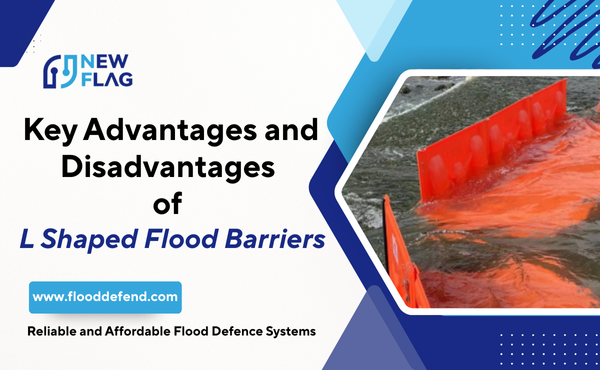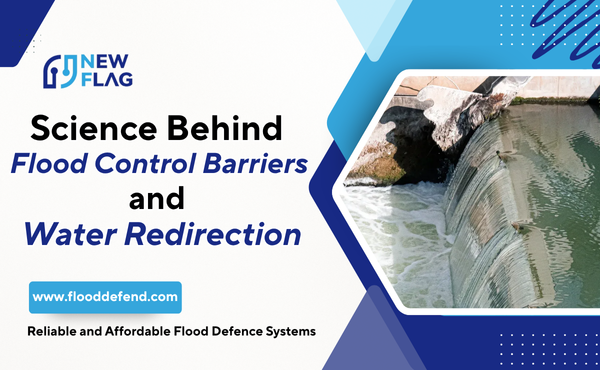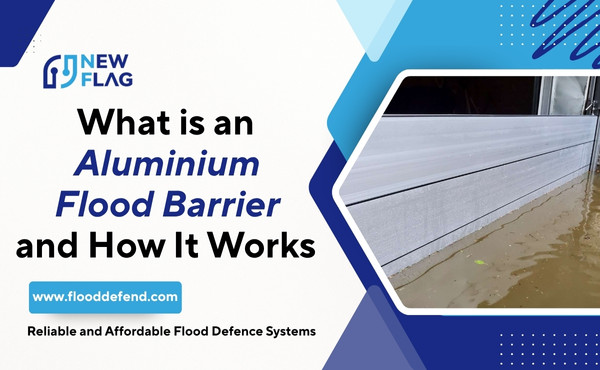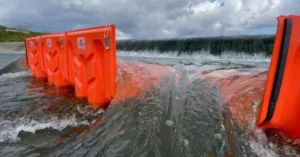
L Shaped Flood Barriers offer strong protection against floodwaters. Their L-shaped design provides stability and resists strong currents. Users can deploy these barriers quickly and reuse them many times.
The barriers take up little space and blend into urban areas with minimal visual impact. However, most models have height limits and do not stack. Uneven ground can reduce their effectiveness. Maintenance is required after each use, and the initial cost can be high.
Advantages of L Shaped Flood Barriers
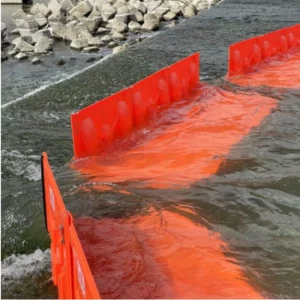
Flood Protection
L Shaped Flood Barriers deliver reliable flood protection in many environments. The unique L-shaped design anchors the barrier against strong water currents. This structure helps prevent tipping and shifting during floods. Many communities use these barriers to shield buildings, roads, and critical infrastructure.
The vertical panel blocks water, while the horizontal base plate distributes the force across the ground. This combination increases stability and reduces the risk of failure.
Tip: The L-shaped profile works well in areas with paved surfaces, such as city streets and parking lots.
Space Efficiency
Space efficiency stands out as a major benefit. L Shaped Flood Barriers require minimal ground area for installation. The horizontal base plate sits flat, allowing the barrier to fit tightly against walls, curbs, or other structures.
This design leaves walkways and access points clear. Urban planners often choose these barriers for locations where space is limited. The compact footprint makes them suitable for protecting entrances, storefronts, and narrow alleys.
- Small footprint
- No need for deep foundations
- Fits well in crowded urban settings
Easy Deployment
Users can deploy L Shaped Flood Barriers quickly, even with limited manpower. The barriers arrive in manageable sections that workers can position without heavy machinery. PVC L shaped flood barriers offer extra portability because they weigh less than other types. Teams can move and install these barriers with ease, making them ideal for emergency situations. The simple design allows for fast setup and removal, which saves valuable time during flood events.
Note: Portability helps responders protect more areas in less time.
Durability & Reusability
L Shaped Flood Barriers provide long-term value through durability and reusability. Manufacturers use strong materials that resist corrosion and damage from water exposure.
After a flood, teams can clean and store the barriers for future use. This feature reduces waste and lowers replacement costs. Many organizations prefer reusable barriers because they support sustainable flood management practices.
- Withstands repeated use
- Maintains structural integrity over time
- Reduces overall lifecycle costs
Environmental & Aesthetic Benefits
Environmental and aesthetic benefits add to the appeal of L Shaped Flood Barriers. The barriers do not require permanent installation, so they cause minimal disruption to the landscape.
Their low profile blends into surroundings, preserving the visual character of urban and residential areas. The reusable nature of these barriers also supports eco-friendly flood protection strategies.
Alert: Choosing barriers with minimal visual impact helps maintain property values and community appeal.
Disadvantages of L Shaped Flood Barriers

Height Limitation
Most L Shaped Flood Barriers reach a maximum height of about 28 inches. This restriction means they cannot protect against deep floodwaters. Communities facing severe flooding may need taller solutions. The fixed height can limit the effectiveness of these barriers in high-risk zones.
Note: Taller barriers often require different designs or support systems.
Not Stackable
L Shaped Flood Barriers do not stack on top of each other. The design prevents users from increasing the height by layering multiple units. This feature can reduce flexibility during emergencies. Teams must rely on the original barrier height, which may not suit every situation.
- Single-layer protection only
- No vertical expansion possible
Unsuitable for Uneven Ground
Flat surfaces work best for L Shaped Flood Barriers. Uneven ground can cause gaps under the base plate. Water may seep through these gaps, reducing the barrier’s effectiveness. Urban areas with paved streets benefit most from these barriers. Rural or sloped locations may face challenges during installation.
Alert: Proper site assessment helps avoid water leakage and barrier instability.
Maintenance Needs
After each flood event, teams must inspect and clean the barriers. Dirt, debris, and water exposure can affect performance. Regular maintenance ensures the barriers remain reliable for future use. Neglecting upkeep may lead to damage or reduced protection.
- Cleaning after use is necessary
- Inspection for wear and tear required
Initial Cost
L Shaped Flood Barriers often require a significant upfront investment. The cost includes manufacturing, transportation, and installation. Some organizations may find the initial expense challenging. However, the reusable nature of these barriers can offset long-term costs.
Tip: Budget planning helps communities prepare for the initial purchase and ongoing maintenance.
L Shaped Flood Barriers: Comparison Table
Pros vs Cons
The following table summarizes the main advantages and disadvantages of L shaped flood barriers. This comparison helps readers quickly see the strengths and weaknesses of this flood protection option.
| Pros | Cons |
|---|---|
| Strong flood protection | Limited height (about 28 inches) |
| Stable against strong currents | Not stackable |
| Space-efficient design | Unsuitable for uneven ground |
| Quick and easy deployment | Requires regular maintenance |
| Durable and reusable | High initial cost |
| Minimal impact on environment | No vertical expansion |
| Low visual impact in urban areas | May not suit all locations |
Tip: L shaped flood barriers work best in urban areas with flat, paved surfaces. They provide reliable protection for entrances, storefronts, and infrastructure where space is limited.
Key Advantages:
- The L shape anchors the barrier and resists water pressure.
- Teams can deploy and remove the barriers quickly.
- The design fits well in crowded spaces and does not block walkways.
- Reusability supports sustainable flood management.
Key Disadvantages:
- The fixed height limits protection during severe floods.
- The barriers do not stack, so users cannot increase height.
- Uneven ground can cause gaps and reduce effectiveness.
- Maintenance after each use is necessary to ensure reliability.
- The upfront investment may challenge some organizations.
When choosing flood barriers, users should weigh these pros and cons. The best choice depends on the site’s surface, flood risk, and budget. L shaped barriers offer strong protection for many urban settings, but they may not suit every environment.
Structural Design Basics
Key Materials Used in L Shaped Flood Barriers
Manufacturers use PVC as the primary material for L Shaped Flood Barriers. PVC stands for polyvinyl chloride. This plastic offers several advantages for flood protection. It resists water and does not rust or corrode. The material remains strong even after repeated exposure to moisture. PVC also weighs less than many other building materials. Workers can move and install the barriers with less effort. The smooth surface of PVC makes cleaning easy after a flood event. Many communities choose PVC barriers because they last for years and require little maintenance.
Tip: PVC barriers can be stored outdoors without damage from rain or sunlight.
Vertical Barrier Panel for Water Blocking
The vertical panel forms the main wall of the barrier. This part stands upright and faces the direction of the incoming water. The panel blocks floodwater and prevents it from reaching protected areas. PVC gives the panel both strength and flexibility. The panel does not bend or break under normal water pressure. The smooth surface helps water flow away instead of pooling. The height of the vertical panel determines how much water the barrier can stop. Most panels reach about 28 inches tall, which suits many urban flood risks.
- The vertical panel acts as the first line of defense.
- It keeps water from entering buildings and streets.
Horizontal Base Plate for Load Bearing and Stability
The horizontal base plate sits flat on the ground. This part supports the vertical panel and holds the barrier in place. When floodwater pushes against the barrier, the base plate spreads the force across a larger area. This design prevents the barrier from tipping over. PVC construction keeps the base plate light but strong. Workers can position the base plate on paved surfaces, sidewalks, or driveways. The wide base also helps seal the barrier to the ground, reducing leaks.
Note: A stable base plate is essential for reliable flood protection.
L Shaped Flood Barriers use a simple but effective design. The combination of a strong vertical panel and a wide base plate creates a sturdy defense against rising water.
L shaped flood barriers offer strong protection, easy deployment, and minimal visual impact. However, they have height limits, do not stack, and need regular maintenance.
- Best for: Flat, urban areas with moderate flood risk
- Consider: Site surface, flood depth, and budget
Choosing the right barrier depends on local conditions. Careful assessment ensures effective flood defense and long-term value.


